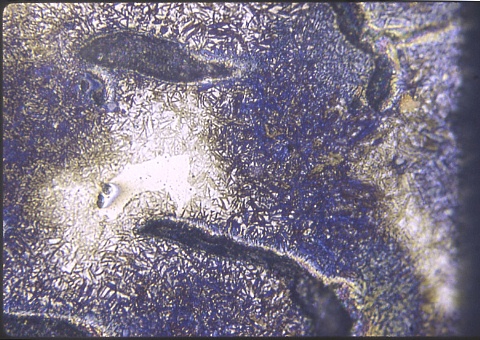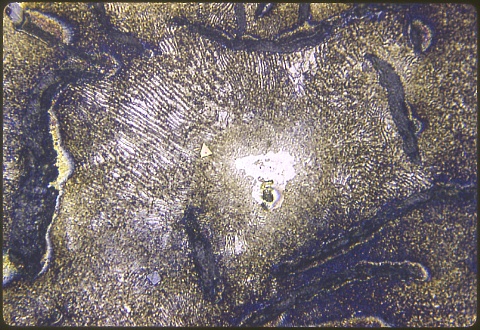
It eventually broke due to the resulting heat checking.
Heat checking is the formation of a pattern of deep, craze like cracks resulting from repeated plastic deformation during radial and tangential expansion brought on by the heating and cooling cycles. The dimensional strains occur both by thermal expansion & contraction and also by transformational volume changes.
This image was made from an area closest to the heated surface and shows martensite, retained austenite, graphite flakes, and a small island of phosphide eutectic.

Here there is another patch of phosphide eutectic as well as a bonus - a small golden triangle of titanium nitride.
Continue to the Summary for this lesson.